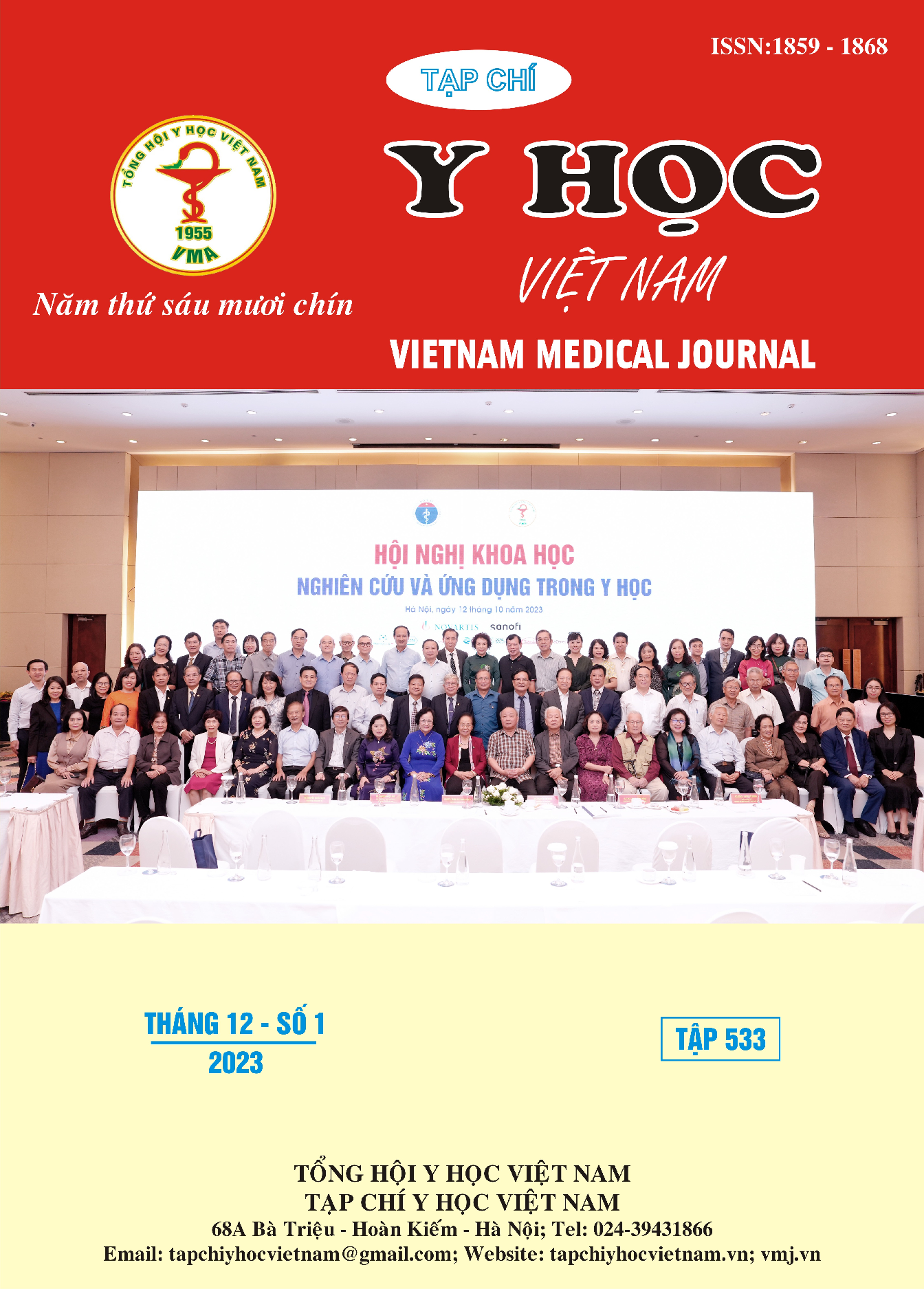STRESS AND STRATEGIES FOR COPING WITH STRESS AMONG HEALTHCARE WORKERS AT THE UNIVERSITY MEDICAL CENTER HO CHI MINH CITY IN 2023
Main Article Content
Abstract
Introduction: Healthcare for healthcare workers is a crucial concern, and evaluating the current status of stress and coping strategies among this group is of paramount importance. Methods: A cross-sectional descriptive study was conducted on healthcare workers at the University Medical Center Ho Chi Minh City from February to July 2023. The study aimed to determine the prevalence of stress using the Perceived Stress Scale and assess coping strategies using the Brief-COPE scale. Results: Analysis of data from 493 healthcare workers revealed an overall stress prevalence of 21.7%. This was further broken down into 12.7% among physicians, 26.1% among pharmacists, nurses, technicians, and midwives, and 18.5% among administrative staff. Among the 107 stressed participants, the most frequently used coping strategy was emotion-focused coping (score of 2.93 ± 0.41), while the least used coping strategy was avoidance coping (score of 2.47 ± 0.42). Factors associated with stress included age, educational level, professional qualifications, marital status, parental status, workload, staffing shortages, and supervisory support. Conclusions: The prevalence of stress among healthcare workers was moderate, with the majority utilizing emotion-focused coping strategies. Therefore, it is recommended to implement support programs, particularly for nurses and administrative staff, especially those aged under 30.
Article Details
References
2. WHO. Mental health in Viet Nam 2021 [Available from: https://www.who.int/vietnam/health-topics/mental-health
3. Chudzicka-Czupala A, Stasila-Sieradzka M, Rachwaniec-Szczecinska Z, Grabowski D. The severity of work-related stress and an assessment of the areas of worklife in the service sector. Int J Occup Med Environ Health. 2019;32(4):569-84.
4. Nguyen TK, Tran NK, Bui TT, Tran LT, Tran NT, Do MT, et al. Mental Health Problems Among Front-Line Healthcare Workers Caring for COVID-19 Patients in Vietnam: A Mixed Methods Study. Front Psychol. 2022;13:858677.
5. Hồ Thị Thu Hương, Trần Kim Trang. Stress, trầm cảm, lo âu ở điều dưỡng. Tạp chí Y học thành phố Hồ Chí Minh. 2017;21(2):223-9.
6. Trịnh Xuân Quang, Tạ Văn Trầm. Tình trạng stress của điều dưỡng các khoa lâm sàng tại bệnh viện Đa khoa Trung tâm Tiền Giang năm 2018. Tạp chí Y học thành phố Hồ Chí Minh. 2018;22(6):52-7.
7. Lê Thành Tài, Trần Ngọc Xuân, Trần Trúc Linh. Tình hình stress nghề nghiệp của nhân viên điều dưỡng. Tạp chí Y học thành phố Hồ Chí Minh. 2008;12(4):1-7.
8. Nguyễn Mạnh Tuân, Đàm Thị Tám Hương, Đặng Quang Hiếu và cộng sự. Stress, trầm cảm, lo âu của nhân viên y tế bệnh viện Trưng Vương năm 2018. Tạp chí Y học thành phố Hồ Chí Minh. 2018;6(22):71.


